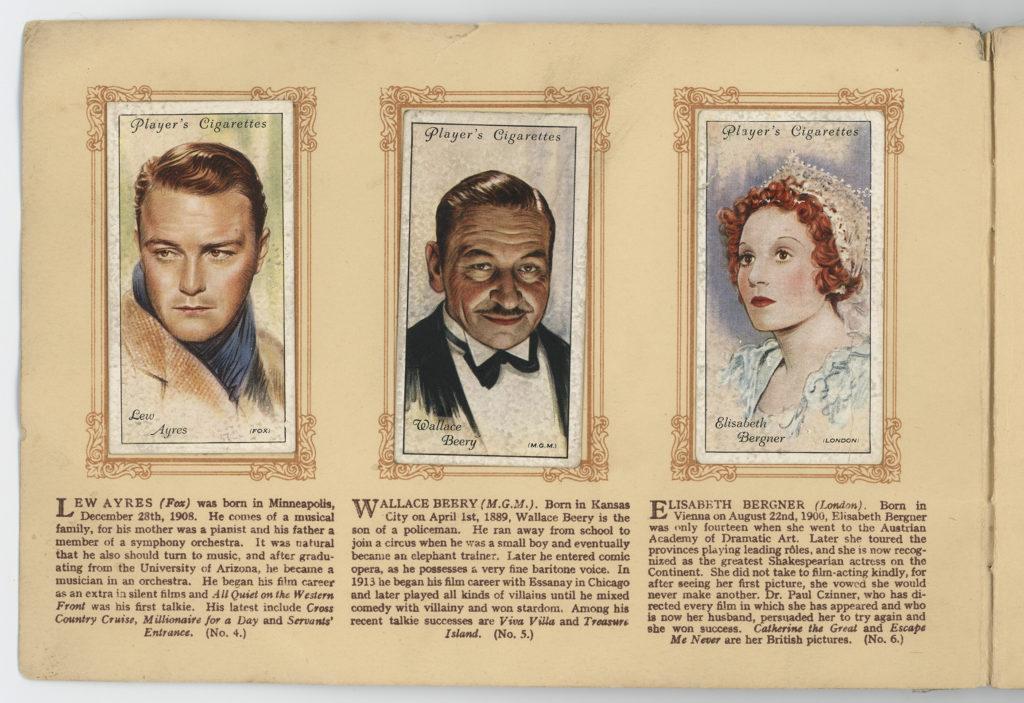The distinctive tastes of British cinemagoers
Critics and historians of cinema agree that Hollywood’s command of the world’s cinema screens was well under way by the mid 1920s, and that this domination was more or less secured by the early 1930s, when the ‘talking picture’ was established. Since Hollywood provided the majority of films screened in Britain, its influence is very apparent in British filmgoers’ tastes throughout the 1930s. But if British fans took Hollywood to their hearts, the Hollywood they embraced was very much their own.
A consistently popular type of film among British cinemagoers was undoubtedly the musical comedy. The early 1930s especially saw a cycle of well-received ‘Viennese musicals’, most of them from Hollywood. Among these were Ernst Lubitsch’s The Love Parade (US, Paramount, 1929; UK general release 1930), voted Best Film of 1930 by readers of the magazine Film Weekly.
The distinctive quality of British cinemagoers’ tastes emerges especially strongly in their preferences among Hollywood films and stars, however. Although this is true across the board (for example, among Hollywood stars favoured particularly by British audiences are the ‘quality’ actors Ronald Colman and Norma Shearer), again a predilection for the musical seems to set British preferences apart. Thus although Shirley Temple was top box office on both sides of the Atlantic for several consecutive years, a number of other Hollywood musical stars scored degrees of box-office success in Britain that they did not enjoy in their own country–Jeanette MacDonald and Deanna Durbin, for example.
| United States box-office rankings | ||||
| 1935 | 1936 | 1937 | 1938 | 1939 |
| Shirley Temple | Shirley Temple | Shirley Temple | Shirley Temple | Mickey Rooney |
| Will Rogers | Clark Gable | Clark Gable | Clark Gable | Tyrone Power |
| Clark Gable | Astaire/Rogers | Robert Taylor | Sonja Henie | Spencer Tracy |
source: International Motion Picture Almanac, 1933-41
| British box-office rankings | |||
| 1936 | 1937 | 1938 | 1939 |
| Shirley Temple | Shirley Temple | Shirley Temple | Deanna Durbin |
| Astaire/Rogers | Clark Gable | Jeanette MacDonald | Mickey Rooney |
| Gracie Fields | Gracie Fields | Spencer Tracy | Shirley Temple |
source: International Motion Picture Almanac, 1937-41
| British box-office rankings: stars of British-made films | |||
| 1936 | 1937 | 1938 | 1939 |
| Gracie Fields | Gracie Fields | George Formby | George Formby |
| Jessie Matthews | George Formby | Gracie Fields | Gracie Fields |
| Jack Hulbert | Jessie Matthews | Will Hay | Robert Donat |
source: International Motion Picture Almanac, 1937-41
An interesting finding to emerge from a study of the tastes of the cinema audience of the 1930s relates to paradigms of femininity embodied in the personae of Britain’s favourite female stars: all of them conspicuously lack attributes of overt, adult, sexuality. While the more glamorous Hollywood stars of the 1930s found relatively little favour, films starring performers who were, or appeared, pre-pubescent, rated highly with British audiences. Hollywood’s Shirley Temple and Deanna Durbin are the most prominent instances of this tendency, but there are others.
Among stars of British films, the juvenile actress Nova Pilbeam (perhaps best remembered today for her role in Hitchcock’s The Man Who Knew Too Much [UK, Gaumont-British, 1934]) enjoyed a large following among some sections of the audience; as did Elisabeth Bergner–all but forgotten today–an actress adult in years but gamine in image. Both Pilbeam and Bergner received awards voted by filmgoers: Pilbeam from readers of both Picturegoer and Film Weekly for her role in Tudor Rose (Robert Stevenson, UK, Gainsborough, 1936); Bergner likewise (for Escape Me Never [Paul Czinner, UK, British and Dominions,1935]).
A few Cinema Culture in 1930s Britain participants still remember these actresses. Beatrice Cooper of Harrow [BC-95-208OT001], who enjoyed Pilbeam’s performance in Little Friend (Berthold Viertel, UK, Gaumont-British, 1934), recalls seeing her perform live at the Golders Green Hippodrome. Of “the brilliant, brilliant actress” Bergner, Mrs Cooper says: “…She came to this country, between the wars…. She made a film called Escape Me Never. Which was absolutely, it was revolutionary. Everybody queued up to see Elisabeth Bergner.” “Escape Me Never. Everybody was crazy about it. Erm, she had a special, very special appeal, Elisabeth Bergner. She was very childlike. In her appearance.” And in his diary entry for 7 May 1935, Glasgow informant Norman MacDonald [NM-92-005PW002] notes: “At night saw Elisabeth Bergner in Escape Me Never at the Gem Cinema and thought it a very fine picture.”
While this trend in cinemagoers’ tastes runs throughout the 1930s, a number of shifts are observable towards the end of the decade. Although the musical continues to maintain its appeal, for example, we see the emergence of a new generation of musical stars. In 1938, the year in which George Formby ousted Gracie Fields from her long-held position as top money-making star of British-made films, the Canadian-born Hollywood singer/actress Deanna Durbin shot virtually overnight into the position of Britain’s overall favourite star. Another juvenile musical performer, Mickey Rooney, also entered the British ratings in the late 1930s and, along with Durbin, displaced Shirley Temple from her top ranking.
These transitions are by no means confined to cinema culture, however. They coincide with significant shifts in meanings of femininity in Britain. But that’s another story….
Annette Kuhn,
1 March 2021
